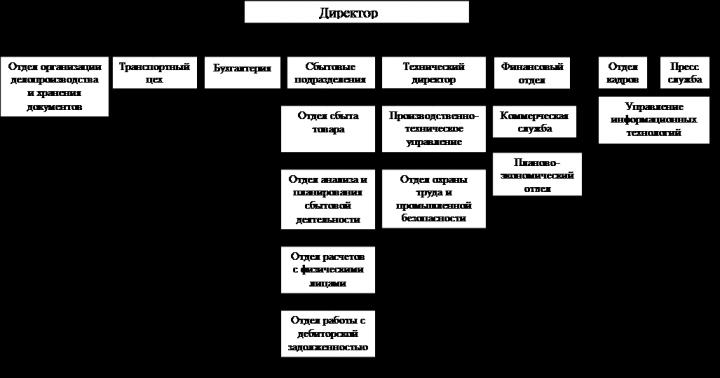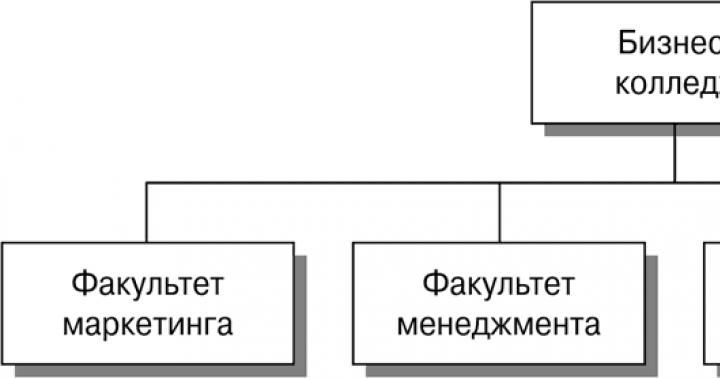What is DSL?
DSL - Digital Subscriber Line - in Russian translation corresponds to the already established term "digital subscriber line". Few people know that these three words were originally used to refer to ISDN-BA. Here's how the term DSL was defined at Bellcore, an AT&T research and development center that developed and standardized ISDN in the 80s: Using the Basic Rate Interface (two 64Kbps switched channels and one 16Kbps data channel based on packet switching technology), DSL provides simultaneous duplex transport of voice and data, as well as signaling and other service information.
In the late 80s, Bellcore based on DSL technology developed new method high-speed (at that time - up to 1.5 Mbit / s) data transmission over copper wires, which, by analogy with its predecessor, was called the "high-speed digital subscriber line" (High bit rate Digital Subscriber Line, HDSL). Then confusion arose with the use of the abbreviation DSL in relation to the line, equipment and technology.
At present, the term DSL has completely lost its former connection with the ISDN BRI line and means the technology of high-speed transmission of discrete signals over a physical line (copper wires). Moreover, a DSL line is not just a "digital subscriber line", which is organized on any equipment (ISDN, modems for physical lines, CSU / DSU digital line adapters, etc.). DSL - a digital communication line (and not necessarily a subscriber one, but also a connecting or backbone in the campus network), which is built only on xDSL devices, i.e. on equipment based on various types DSL technologies: high speed (HDSL), asymmetric (ADSL), variable speed (RADSL), etc.
How long ago was the speed of the Internet, to which they connected via dial-up, equaled 16, or even 8 kbps, and the “lucky ones” who had the opportunity to surf the net at cosmic speeds of 32-33 kbps were revered as owners of manna from heaven? ? However, now the speed of access to the network has increased hundreds of times - thanks to the DSL family of digital technologies.
DSL (abbreviation for Digital subscriber line) is a set of technologies combined into one family, designed for high-speed data transmission over telephone lines. It seems to be the same as a dial-up connection (dial-up), but, nevertheless, the differences between them are very significant. Let's start with the fact that DSL works on leased lines, that is, telephone lines that maintain a permanent connection between the client and server sides. Such lines can be both specially laid and connected telephone channels, and a regular telephone line, if the server is installed not at the second subscriber, but at the telephone company. As with a dial-up connection, DSL requires the installation of special devices on both sides - modems. But DSL modem technology is very different from dial-up modems. The main difference is that DSL modems allow you to transfer data at speeds many times greater. For example, if during a dial-up connection to the Internet, the user's capabilities are limited to browsing WEB pages (not very fast browsing - the speed of a dial-up connection usually does not exceed 56 kbps), and downloading a video in .avi format takes a couple of days (not to mention files in DVD format), then if you have a DSL connection, you can watch the same movie directly in your browser. You can even, using a headset, chat on the Internet - like by phone (in Skype, for example, or another messenger), and in general, get a speed that is comparable to the data transfer rate in local networks.
Currently, the DSL family includes more than a dozen technologies, the most widespread of which is ADSL. It is with the use of this technology that major telephone companies provide their customers with a permanent connection to the Internet (as opposed to a dial-up connection, which will somehow be broken and require reconnection). The letter "A" in the abbreviation-name of the technology is formed from the word "asymmetric" (asymmetric). In this technology, the ability to send and receive data is unevenly distributed - it takes many times less resources to send than to receive. And for most Internet users, this ratio is optimal. Moreover, the speed of receiving information allows you to use almost any Internet services. You can, for example, connect high-definition television (HDTV) or watch online some kind of video tutorial illustrating laptop repair or origami folding techniques. At the same time, although ADSL uses a regular telephone line, this does not interfere at all regular work subscriber telephone.
To the question what is DSL asked by the author qwerty the best answer is DSL (Digital Subscriber Line) is an acronym for Digital Subscriber Line. DSL technologies make it possible to connect users to telephone exchanges, while expanding the usable frequency range of existing lines of the telephone cable network.
xDSL is a generalized abbreviation for DSL technologies. xDSL technologies allow you to transfer data at speeds that are significantly higher than the speeds available to the best analog and digital modems. xDSLs support voice, high-speed data and video transmissions, creating significant benefits for both subscribers and providers. Moreover, many xDSL technologies allow high-speed data and voice transmission to be combined over the same copper pair. The existing types of xDSL technologies differ mainly in the form of modulation used and the data rate.
Answer from Vladimir Kuzyukin[guru]
A technology for transmitting data over a telephone line. Digital Subscriber Line - digital subscriber line
Here, in Russia, the ADSL connection is still widespread.
Asymmetric Digital Subscriber Line - an asymmetric digital subscriber line) is a modem technology in which the available channel bandwidth is distributed asymmetrically between outgoing and incoming traffic. Since the volume of incoming traffic for most users significantly exceeds the volume of outgoing traffic, the speed of outgoing traffic is much lower. This limitation has become inconvenient with the proliferation of peer-to-peer networks and videoconferencing.
For Internet access with an ADSL connection, the same existing ones are used. telephone lines same as for voice communication.
But higher frequencies are used to modulate the digital signal. Before the ADSL modem, the signal is split by a splitter into a high-frequency part that enters the ADSL modem and a low-frequency part, which is a normal signal used by a telephone to receive and transmit voice. In the event that it is necessary to connect a telephone to the splitter in the apartment, a microfilter is used - a device that filters the high-frequency part of the spectrum and excludes deterioration in the quality of the ADSL signal when the handset is picked up on the phone.
Also, this abbreviation can mean
Damn Small Linux (DSL; Russian Damn Small Linux) is a Debian-based Linux distribution for the x86 architecture, bootable from a LiveCD. It can also be installed on a hard disk, USB Flash Drive, etc. It was created for use on old computers, therefore it has low requirements for the processor and RAM and a small size (50 megabytes). Minimum system requirements: CPU - 486DX, OP - 16
You did not indicate in what context this abbreviation is used.
Answer from Yes it's me![guru]
Not a new transmission system
Answer from Alexander Kulikov[guru]
Transmission of TV signal and the Internet over a telephone line.
Answer from HADER[guru]
I'm sitting on a dsl, this is a broadband transmission of data, I have 100 Mbps on my LAN
Answer from Maxim Virus[expert]
THE AFFFTAR OF QUESTION NEED TO ATTACH THE INTERNE, FOR HE DOES NOT KNOW TO CALL THEM.
did the author hear something about the existence of such search engines as yandex, nigma, google?
The widespread use of DSL (Digital Subscriber Line), which literally means “digital subscriber line”, is due to the fact that in this case, as well as in the case of traditional user modems, a regular telephone line is used. That is, the infrastructure for creating DSL connections already exists. However, unlike traditional dial-up connections, the DSL connection is broadband and is not subject to the 3100 Hz bandwidth limitation of dial-up lines. In addition, DSL modems transmit data in digital form, rather than using the digital-to-analog conversion when transmitting and the analog-to-digital conversion when receiving data, which is typical for traditional analog modems.
DSL technology can significantly expand the bandwidth of old copper telephone lines connecting telephone exchanges with individual subscribers. Any subscriber has the opportunity to significantly increase the speed of his connection using DSL technology. In addition to the fact that using a DSL connection provides you with 24/7 Internet access, you can still use normal phone calls.
The communication speed of a DSL connection depends on the quality and length of the lines connecting the user and the provider. At the same time, providers usually give the user the opportunity to choose the connection speed that best suits his individual needs.
When talking about DSL technologies, they usually mean a whole range of technologies, which are sometimes called xDSL. Different technologies differ from each other in their purpose, the speed of "downstream" (from the network to the user) and "upstream" (from the user to the network) traffic and the maximum distance. The following DSL technologies are most popular: ADSL, G.Lite, RADSL, HDSL, VDSL, SDSL.
ADSL(Asymmetric Digital Subscriber Line) is an asymmetric DSL connection in which the downstream traffic rate is higher than the upstream traffic rate. This asymmetry makes ADSL ideal for organizing Internet access, when users receive much more information than they transmit. ADSL technology provides downstream speeds ranging from 1.5 to 8 Mbps and upstream speeds from 640 Kbps to 1.5 Mbps.
ADSL allows you to transfer data at a speed of 1.54 Mbps over a distance of up to 5.5 km over a single twisted pair of wires. Transfer rates of the order of 6-8 Mbit/s can be achieved when transferring data over a distance of no more than 3.5 km.
G.Lite, also known as ADSL.Lite, is a simplified version of ADSL that provides downlink speeds up to 1.5 Mbps and uplink speeds up to 512 Kbps. As in the case of an ADSL connection, only one twisted pair is used here.
RADSL(Rate Adaptive Digital Subscriber Line) is a variant of an asymmetric DSL connection with link rate adaptation. RADSL technology provides the same data transfer rate as ADSL technology, but at the same time allows you to adapt the transfer rate depending on the length of the line and its noise level.
HDSL(High Bit-Rate Digital Subscriber Line) is a high-speed DSL connection. Unlike the already discussed DSL technologies, in this case, a symmetrical DSL connection is provided for downstream and upstream traffic. An HDSL connection requires two or even three pairs of wires. When using two pairs, the data transfer rate is 1.544 Mbps, and when using three pairs - 2.048 Mbps. Telecommunications companies use HDSL technology as an alternative to T1/E1 lines. T1 lines are used in the USA and provide a data transfer rate of 1.544 Mbps, and E1 lines are used in Europe and provide a data transfer rate of 2.048 Mbps.
HDSL2 technology is a logical result of the evolution of HDSL technology. This technology provides similar performance to HDSL technology, but uses only one pair of wires.
SDSL(Single Line Digital Subscriber Line) is a single-line DSL connection that is symmetrical in terms of downlink and uplink traffic. SDSL technology, like HDSL, provides connection speeds corresponding to T1 / E1 lines, but using only one line (one pair of telephone wires). In this sense, SDSL technology is similar to HDSL2. The maximum transmission distance over an SDSL connection is limited to 3 km.
VDSL(Very High Bit-Rate Digital Subscriber Line) is a super high speed DSL line.
In asymmetric mode over a single twisted pair, the downstream traffic rate is from 13 to 52 Mbps, and the upstream traffic rate is from 1.5 to 2.3 Mbps.
In symmetrical mode, speeds up to 26 Mbps are supported.
The maximum transmission distance for this technology is between 300m and 1300m.
Of all the considered DSL connections, ADSL.Lite is of particular interest to the end user. Actually, most providers offer this type of broadband connection to end users.
To implement an ADSL connection, special digital devices (splitters) are connected to the ends of the copper pair - one at the PBX, the other in the subscriber's apartment - which ensure the simultaneous operation of both the telephone and the Internet. The subscriber splitter has two outputs, one of which is connected to a telephone (or to an office PBX), and the other to an ADSL modem. Similarly, one output of the station splitter is connected to the exchange, and the other is connected to the multiplexer (DSLAM) connected to the Internet. As a result, the entire bandwidth of the copper pair is divided into 247 separate channels, each with a bandwidth of 4 kHz. If we ignore the technical details, then it looks like 247 independent telephone lines have been laid between the subscriber and the PBX building, two of which carry voice, and the rest - data.
The entire high-speed flow is divided into a large number of smaller flows, which at the ends of the line are again assembled into a single whole. The control system is designed in such a way that the status of each channel is continuously monitored and information is sent to those of them that have the best characteristics.
What is the difference between T1 and DSL technologies? How is DSL different from satellite internet? Which of these three technologies is the best and why? In this article, I will tell you about these three technologies and the differences between them.
T1, DSL and satellite technologies are primarily used for Internet access.
What is T1?
T1, also known as DS1 carrier, is a T-carrier signaling system that is used for voice and data transmission. It was developed at Bell Labs and is widely used in Japan and North America. The term "T-carrier" is used to refer to the digital multiplexed radio carrier system developed at Bell Labs. DS1 refers to the bit pattern used on the T1 line. Twenty-four 8-bit channels make up the DS1 scheme, in which each channel is a 64 kbit scheme. The T1 line can carry data at a rate of 1.544 megabits per second. It can be connected to the telephone network for voice transmission or connected to the router's network for data transmission. It provides a reliable connection and performs reasonably well.

DSL is an abbreviation for Digital Subscriber Loop, which is a set of technologies that provide data transmission over local telephone networks. DSL technology is known as digital subscriber line. DSL service providers offer speeds from 256 kilobits to 24,000 kilobits per second. DSL that supports voice transmission works by dividing the frequency on the telephone line into two bands. Band high frequency is used for data transmission, while the lower one is used for carrying voice signals. In a DSL system, the DSL transceiver is connected to the user's telephone line. To access the Internet, it performs a self-test. It then pings the connection between itself and the computer it is connected to. And finally, synchronizes itself with the telephone line. I don't want to confuse you even more by adding one more technology, but those who are interested can read the article about comparing DSL and cable connection to the Internet.

Satellite Internet connection is a system in which data is transferred between computers via satellite. The connection is established through the antenna dish and transceiver, which use the radio frequency spectrum for data transmission. The downlink speed is less than the downlink speed, which depends on the capabilities of the Internet traffic and servers. Since the signals have to travel long distances, this means that the interval between requesting data and receiving a response will be quite long. In general, satellite Internet access is of great use in places where terrestrial Internet access is not available. Satellite Internet services are best for mobile use. They provide users worldwide and all the time with internet connectivity.
Difference between T1, DSL or satellite internet
The main difference between T1 and DSL is the price. T1, which offers speeds of around 1.5 Mbps, is much more expensive than a DSL line. In addition, the T1 line is directly connected to the 1.5 Mbps port, and the DSL is connected to the DSLAM (xDSL Digital Subscriber Line Access Multiplexer (Modem)). T1 connection ensures consistent and uninterrupted throughput through a dedicated port, while the performance of the DSL line depends on the amount of traffic on the DSLAM. Another important difference between the two technologies is distance. DSL technology is distance sensitive and operates in the range of 4500-5500 meters, T1 line can be accessed in remote areas and operates in the range of 30-80 km.
How is satellite internet different from DSL? First, satellite Internet gives users a permanent connection to the Internet, providing two-way Internet access and constant bandwidth. Satellite services can be accessed anytime and anywhere. DSL technology, because it works over telephone lines, offers neither constant speed nor availability. In addition, it includes a huge amount of cables, while satellite Internet does not require any wires.
All three methods of accessing the Internet have their pros and cons. They have comparative advantages over each other. Ultimately, each of you must decide which technology to choose for yourself. And now that you have gained some knowledge about each of them, it will be easier to make a decision.


